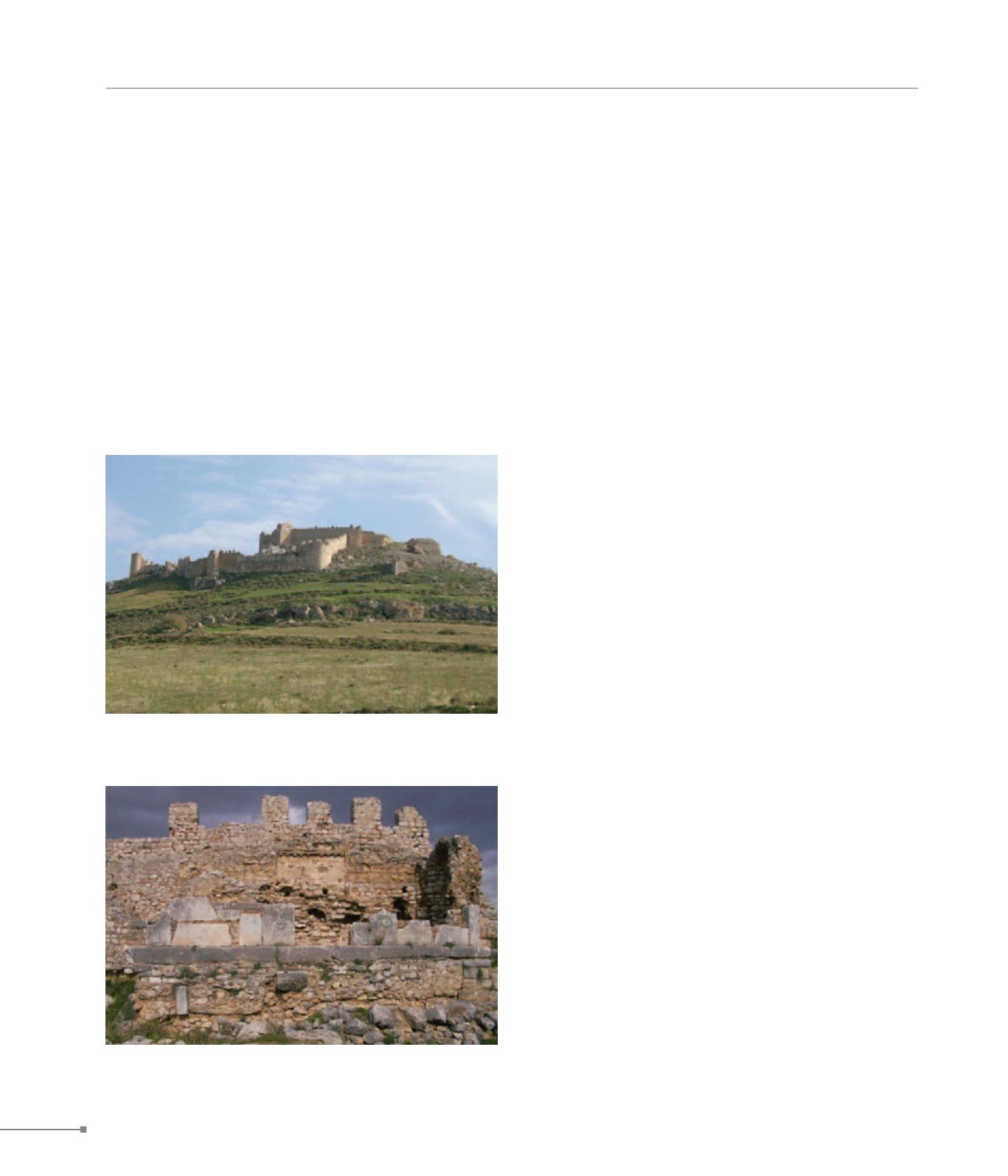
Panariti.
Argos.
PELOPONNESE
220
286. Argos, Larisa, Koimisis of the Theotokos (Άργος, Λάρισα, Κοίμηση
της Θεοτόκου)
286. Argos, Larisa (Άργος, Λάρισα)
284.
Panariti.
The barrel-vaulted church of Saint George occupies the nave of
an Early Christian basilica of the 6th c., from which survives the
complete apse.
285.
Argoliko.
Between Tiryns and Aghia Triada, at the cemetery of Argoliko,
is the two-columned cross-in-square Evangelistria church (12th
c.), with many subsequent additions.
286.
Argos.
Argos played a significant role in the NE Peloponnese from the
Early Christian years. Its fortress crowns Larisa hill. The origi-
nal fortification dates from the Mycenaean period but took its
present form in the Byzantine period. It seems that in the “dark
ages” (7th-8th c.) it served as a shelter for the inhabitants, many
of whom settled there, as attested by traces of the basilica upon
which the subsequent Panagia church was probably built. Prior
to the Fourth Crusade (1204) numerous repairs and reinforce-
ments to the fortification took place. The fort has two enclo-
sures: the outer is horseshoe-shaped, stretching from the SE
to the NW of the hillcrest, surrounding the largest part of the
fort; and the smaller, quadrilateral enclosure on the hilltop. Ac-
cess was possible through an arched gate in the S of the small
enclosure. Within the enclosure are three large cisterns. In the
Frankish period fortifications were reinforced, rectangular bat-
tlements were constructed and towers were added.
The ruined cross-vaulted church, possibly of the Koimesis of
the Theotokos, which adjoined the N wall of the fortress had
probably been built above an earlier three-aisled basilica. The
foundation inscription places its construction at 1174 and men-
tions the local Bishop Niketas as its founder.
On Deirada hill, above the ruins of Apollo Pythaios’s temple,
a three-aisled basilica is thought to have been constructed. At
a short distance N of the basilica, a 5th c. baptistery has been
discovered. When the original basilica was destroyed, a sec-
ond one was reconstructed with a five-sided apse and a bap-
tistery to the N. At the Palaiopyrgos site a basilica with mosaic
floors (6th c.) has been found. At the junction of Arkadias and
Messinias Streets, W of the mosque which today is the church
of Saints Constantine and Helen, the semicircular apse of a ba-
silica has been revealed. A cruciform baptistery further to the
W is associated with this basilica. At the Aghios Taxiarchis site
a structure has been excavated, perhaps a bath house, with
mosaic floors of the late 5th c., today located in the yard of
the Archaeological Museum. On the road to Kefalari the three-
aisled basilica of Saint Paul with mosaic floors (6th c.) has also
been explored. At numerous places throughout the city various
Early Christian secular buildings with mosaic floors and private
baths have been excavated. The city featured four cemeteries,
of which the N was in use throughout the Byzantine period.


